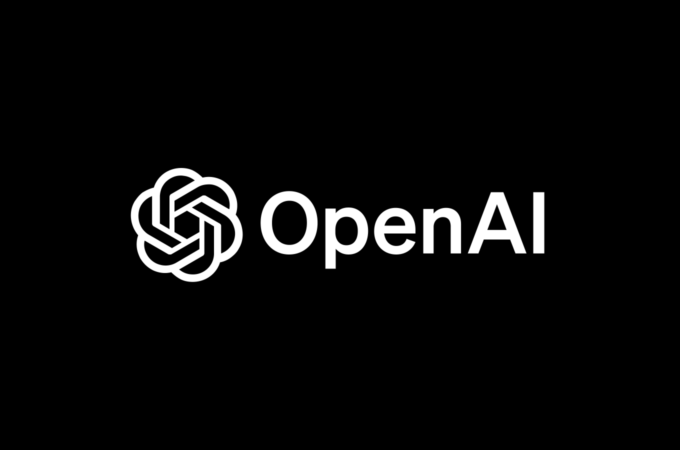
Fintech mergers are reshaping nascent sector. What must APAC firms do to survive?
By Vladislav Solodkiy for The Deal Street Asia
Fintech is currently undergoing a natural evolution stage, with the previous three years being a ‘toothbrush’ era: when you performed just one function, but better than anyone, and when you are irreplaceable and used every day. The long-awaited turning point came in 2015 when various services started merging with each other in some way. And it’s understandable — if the first wave of advanced customers were ready to bake a cake with disparate ingredients themselves, the mass-market customer wants to enjoy a comfortable ecosystem of services with seamless integration allowing the customer to easily use data from one service inside the other and enjoying the benefits from their joint use.
Fintech companies worldwide have reached a point where they can potentially substitute almost any service from the banking value chain. The legitimate question to be raised then is: If there is a startup for each service a bank provides, do we really need banks? The recent wave of fintech startups who have started to engage in collaboration and merger of their services highlights the relevance of this question, as the precedent to further market consolidation.
US Experience In March 2016 US-based robo-advisor Wealthfront launched a new version of its wealth management service, integrating tools like Venmo and Redfin to collect information in order to generate a more comprehensive picture of its customers’ financial holdings.
NY-based mobile banks Moven, Payoff (which offers tools to help individuals pay down credit card debt) and CommonBond (which offers student loan refinancing tools) partnered to deliver digital financial innovation. The partnership offers an interesting mix of services designed to appeal to customers who prefer to bank primarily through their mobile device and have credit card or student loan debt. The incentives offered show that the partners recognize the need to motivate customers to use new services.
Square has started to think beyond what it can do in the commerce space – their new App Marketplace – Build with Square – complements Square’s wide array of existing offerings, like Intuit QuickBooks, Xero, IFTTT, Stitch Labs, Bigcommerce, and Weebly. Prosper, the marketplace lender focused on refinancing and credit rehabilitation, has re-launched its BillGuard PFM-app, (acquired in September 2015 for $30M) under its own brand as Prosper Daily, bringing one-stop windows into a user’s total financial history.
Prosper’s views the mobile app as a way to engage with potential customers even if those people cannot receive Prosper loans. Also Read: Cryptocurrency and fintech integral to the human economic condition: Jarrod Luo APAC Fintech ecosystems thriving: PWC & Startupbootcamp Japan looking to embrace ‘fintech’ revolution by easing investment restrictions
EU & APAC Experience
Firdor, a German online bank, has ventured into the mPOS space with the “European Square”, SumUp. Fidor offers in a single front-end solution a unique user experience, with 25 different products from third-party providers, including brokerage services, precious metals trading facilities, crowdfinancing offers and even peer-to-peer (P2P) loans.
P2P loans are when customers can post to the online community a desire to borrow money, which other customers can offer to lend to them. Matthias Kröner, CEO of Fidor Bank, described the approach as “a marketplace, shielded by a banking license.” Zopa, the world’s first P2P lender, recently signed a deal with Metro Bank, a challenger bank in London started by Vernon Hill, who created Commerce Bank in the U.S. Metro. “This will allow the bank to lend its funds on our platform, a first of its kind in the UK,” wrote Zopa’s CEO Mat Gazeley.
The alliance between Zopa and Metro will provide the lender with the funds it needs and attractive returns for Metro. Number26, a Peter Thiel-backed German startup that’s setting out to create the bank account of the future, has announced a tie-up with London-based peer-to–peer money-transfer firm TransferWise. The partnership will give Number26 customers in-app access to a cheap international money-transfer service.
“Our goal is to leverage the best banking products from around the world and make them accessible to customers with one tap, creating a fintech hub inside the Number26 app,” the company said. In October 2015 Bangalore-based mPOS-startup Ezetap launched a universal mobile wallet acceptance facility in partnership with the largest wallet providers in the country, Paytm, Mobikwik and FreeCharge. This is aimed at offering merchants a unified one-stop solution for all payment acceptance.
Australian-based Tyro Payments chief executive Jost Stollmann wants to see the emergence of a new financial services economy operated by innovative companies that create services that can work with each other. Stollman wants fintech entrepreneurs to work together against the large banks, which he believes will use their investments in startups to slow innovation.
Instead of hoping their businesses will be bought and adopted by big banks, he said they should aim to take the banks’ customers and revenue, saying, “I call this the ecosystem.”
Series B investments
Less than half (40%) of companies that raised a Seed or Seed VC round in 2009-2010 raised a second round of funding. 225 (22%) of companies that raised a seed round in 2009-2010 exited through M&A or an initial public offering (IPO) within six rounds of funding, while 1 per cent exited after the 6th round of funding, for a total of 226 companies. 9 companies (0.9%) that raised a seed round in 2009-2010 reached a value of $1B+ (either via exit or funding round). 77 per cent of companies are dead.
56 per cent of companies that raised a follow-on round after their seed are subsequently able to raise a second follow-on round following that investment. In other words, it’s easier to raise a second post-seed financing than the first post-seed financing. As noted, only 40 per cent of companies are able to raise a post-seed round. In the later follow-on rounds, the gap between the average amount raised and median amount raised becomes much higher, indicating the presence of mega-rounds.
According to Fred Destin, general partner at venture capital firm Accel, Series B rounds are hard for a simple reason: suspension of disbelief fades and is replaced by an increasingly cold, hard look at milestones and progress. Paraphrasing Destin: “Series B is the round where the rubber meets the road, where the promise has to be met with numbers and projections. Series B is the round where hard nosed investors drive ownership up before your company really starts to scale. Series B is the unloved valley of slow progress that precedes scaling.
It’s the no-man’s land of the startup build phase. Series B is raised on mostly one thing: your ability to instill confidence.” Destin notes that Series B is the phase of the when your enterprise needs to fully staff the engineering team, initiate the hiring of a commercial team that takes its time scaling, establish a full layer of VP’s to demonstrate a basis for scale and otherwise adapt the company’s business operating system to new protocols. This is a stage where a corporation is particularly fragile. Whether the fintech sector can continue to thrive throughout 2016 is open to debate. Speaking recently to Inc. magazine, fintech enthusiast Max Levchin casts a cloud over funding prospects heading in to the next year.
Levchin says: “My general view of the world is that raising money for series B will be harder in 2016 than it was in 2015 in fintech. There’s a perception of oversaturation or at least significant overinvestment in too many small bets being taken by venture capital. My guess is that you will see a lot of M&A and failure activity.” Consolidation is the future Singapore-based VC firm Golden Gate Ventures predicted in a report that mergers and acquisitions (M&As) will dominate future exits in the Southeast Asia, with a minimum of 250 M&As occurring each year beginning from 2020 – a whopping 500 per cent increase from the 2015 figure.
Vincent Lauria, managing partner at Golden Gate, explained: “In the United States, a successful exit involves going public. The financial returns generated from listing on NASDAQ or the LSE usually mean that both investors and entrepreneurs alike have generated a pretty healthy return on their investment. “In Southeast Asia, it’s the opposite: a trade sale will often result in larger financial returns than going public, especially if the acquirer has a strong strategic interest in the region,” he adds. Commenting on what lessons Southeast Asian firms could learn from Didi Dache and Kuaidi Dache, Anh-Minh Do, a former Tech in Asia editor and currently communications director for Vertex Venture Holdings, wrote:“The ecosystems are still nascent, and this is exactly why companies like Lazada are keen to swoop in and dominate.”
He added: “This will only continue as multinational well-financed startups come in to grab marketshare where local Southeast Asian companies are lackadaisical. If we are to believe the common assumption that what happens in China precedes Southeast Asia by 5 to 15 years (depending on the country), then the region better watch out. The lesson here is clear. Southeast Asian companies should start thinking or planning for market consolidation.” In essence, Asia Pacific and Southeast Asian firms in the fintech space will eventually have to merge, acquire stakes in other venture and form partnerships, otherwise consolidating their position in the market or risk having their market share eroded by competitors from outside the region. As Anh put it: “Merge or wither away, pick your poison. But either way, lose the ego.”
First appeared at Deal Stree asia





